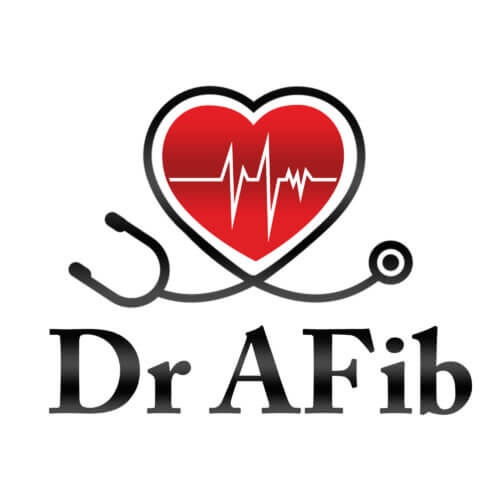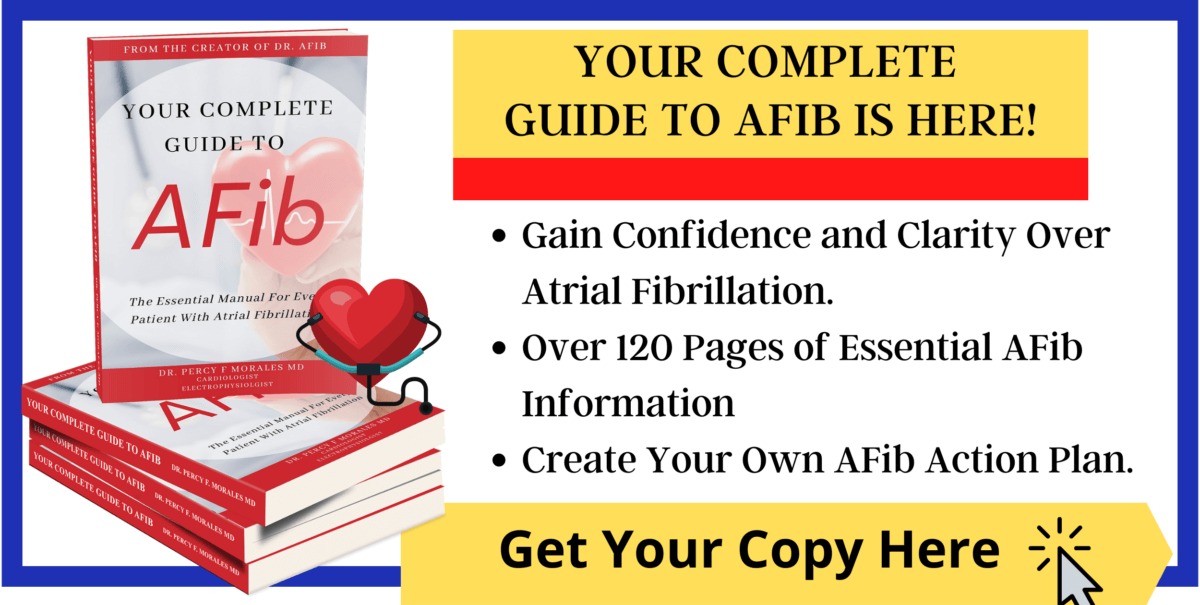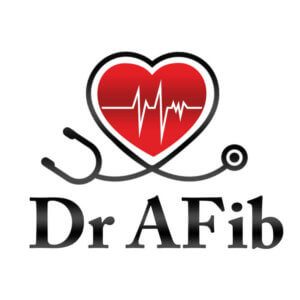AFib and Stroke: What You Need to Know
Read more about AFib and stroke here. Did you know that being diagnosed with atrial fibrillation significantly increases your risk of experiencing a stroke?
As one of the most common heart arrhythmias diagnosed across the country, research has shown that people living with atrial fibrillation are 4-6 times more likely to experience stroke symptoms during their lifetime — a statistic that can be pretty terrifying for newly diagnosed patients.
But, just because you have been diagnosed with AFib doesn’t mean you are destined to experience a stroke! Despite the increased risk, there are many sustainable interventions that can be made to your lifestyle and AFib treatment plan to ensure that you lower your chances of experiencing a stroke — ranging from increased education and awareness to surgical interventions and medications.
In this article, I cover the basic need-to-know information about atrial fibrillation and stroke so you and your loved ones can improve your safety and overall health while living with this common chronic heart condition:
Understanding the Connection between AFib and Stroke
To better understand the connection between atrial fibrillation and stroke, we first need to explore the physiological changes AFib causes to a person’s heart and heart rhythm.
Atrial fibrillation is a heart arrhythmia caused by irregular electrical impulses within the cardiac tissue. Primarily affecting the top two chambers of the heart (called the atriums), people with AFib experience faster than usual contractions of these chambers, which causes symptoms to arise.
If left untreated, this elevated contraction rate of the heart’s atriums can impair the heart’s ability to fully empty the atrium of blood with every heartbeat — and as a result, some of the remaining blood can begin to clot and coagulate, especially in an area of the left atrium called the left atrial appendage. If the clot becomes dislodged from the atrium and is pumped into the body, it can make its way into a major blood vessel in the brain. If this occurs, the brain tissue surrounding the blocked vessel will receive less oxygen, causing the sudden onset of stroke symptoms.
AFib and Stroke: Symptoms of Stroke You Need to Know
As one of the most important aspects of stroke management, identifying and responding to stroke symptoms is one of the best ways to ensure that you get the care you need. The faster someone gets treatment for a stroke, the better the recovery for the patient. Some of the most common signs and symptoms of a stroke include:
-
Sudden changes in speech or language comprehension
-
Paralysis, numbness, or tingling of the face or limbs
-
Changes to a person’s vision
-
A strong and sudden headache
-
Difficulty walking or poor coordination and balance
If you or someone you love has recently been diagnosed with AFib, you may have heard of the FAST response method for providing care for a patient having a stroke. Recommended by the CDC, the FAST method is a quick and easy way to identify and respond to anyone displaying possible stroke-like symptoms:
-
F — Face: Ask the person to smile. If the person is having a stroke, one side of their face may droop or be less responsive than the other.
-
A — Arms: Ask the person to raise their arms. If the person struggles to lift both arms to the same height (or one begins to drift downwards), this could be a sign of stroke.
-
S — Speech: Ask the person to repeat a short and simple phrase. If their speech is slurred or impaired, they may be experiencing a stroke.
-
T — Time: If you are with someone who suddenly develops any of the following symptoms, it is time to call for emergency medical care.
Calculate your AFib Stroke Risk Score (CHADSVASC Score)
Looking for ways to better understand an individual AFib patient’s stroke risk, the CHADSVASC score was created in 2001. Used across the country to better adjust a person’s AFib treatment plan, knowing your stroke risk can better help you understand treatment options.
To determine your CHADSVASC score, tally up your points use the following scoring system:
-
C — Congestive heart failure: If you have been diagnosed with CHF in addition to your atrial fibrillation, you get one point for this section.
-
H — High blood pressure: If you have been diagnosed with hypertension (even if you take medications to control your symptoms), add one point to your score.
-
A — Age: If you are 75 or older, add two points for this section to your score.
-
D — Diabetes: If you have been diagnosed with diabetes (even if it is well controlled with diet or medications), add one point to your score.
-
S — Stroke: If you have a past medical history of stroke or transient ischemic attack (TIA), add two points to your score.
-
V — Vascular disease: If you have been diagnosed with vascular disease (including atherosclerosis, peripheral vascular disease, or have had a previous heart attack or stent in your heart), add one point to your score for this section.
-
A — Age: If you are between the ages of 65-74, add one point to your score for this section.
-
Sc — Sex category: Your sex plays a role in your stroke risk. If you are a woman, add one point to your score.
After adding up your score, the final number acts as a risk guide for your cardiologist when choosing treatment plans. In most cases, a score of zero to one indicates that you are at low risk of experiencing a stroke — but patients with scores higher than 2 for men, or 3 for women may require anticoagulation medications to reduce their risk of experiencing a stroke.
AFib and Stroke: Preventative Management is Key for Stroke Risk Reduction
Due to the correlation between atrial fibrillation and increased risk of stroke, it is incredibly important for anyone diagnosed with AFib to have preventative measures added into their care routine. Often decided by your cardiology team based on your past medical history and CHADSVASC score, here are a few examples of medical treatments used to reduce risk of stroke in AFib patients:
Medications for Stroke Prevention
Taking blood thinning medications can help to reduce your risk of developing blood clots and experiencing stroke symptoms. Blood thinning medications, such as the ones discussed below, usually reduce risk of stroke for AFib patients by a range of 60-70%. In addition, several more recent trials have demonstrated that newer blood thinners, such as Eliquis or Xarelto, are approximately 20% better then warfarin for stroke risk reduction. Examples of some of the most commonly prescribed blood thinners for patients with AFib include:
-
Warfarin (Coumadin) — Warfarin is a once-a-day medication that interacts with a coagulation protein to slow the blood clotting process. As a relatively potent anticoagulant, studies have found that patients on warfarin have between a 2.4-8.1% risk of developing a significant bleed while taking the medication. In emergency situations, an injection of vitamin K can reverse the effects of warfarin.
-
Pradaxa (Dabigatran) — As a twice-a-day oral medication, Pradaxa prevents blood clotting by attaching itself to thrombin (our body’s primary blood clotting agent) to slow the coagulation process. The risk of developing a major bleed while taking Pradaxa has been shown to be as high as 9%, which can be reversed using an injection of Praxbind (idarucizumab).
-
Xarelto (Rivaroxaban) — Taken once a day with dinner, Xarelto is an oral anticoagulant that blocks factor Xa in the blood clotting cascade. There is no blood work required to monitor patients on this medication. Xarelto has been found to have a 3.1% per year risk of major bleeding, which can be counteracted with an emergency dose of Andexxa.
-
Eliquis (Apixaban) — Similar to Xarelto, Eliquis is an anticoagulant that slows the clotting of the blood by attaching itself to clotting factor Xa. Studies have found that Eliquis has a 2.13% risk of significant bleeding per year. This medication can also be reversed using Andexxa.
-
Savaysa (Edoxaban) — Edoxaban is a direct Xa factor inhibitor taken as a once-a-day pill. The risk of major bleeding while on Savaysa is 2.75% per year, though more research is needed to better understand this medication. Currently, there is no known definitive reversal agent for this medication.
Read more about comparisons between different blood thinning medications here.
Surgical Interventions for Stroke Prevention
For patients with a higher risk of stroke, surgical intervention may be required to prevent or contain blood clots forming in the heart’s atria, especially if patients are unable to tolerate standard recommended blood thinning medications. These procedures are often performed in a minimally invasive manner, which decreases the risk of complications and reduces recovery times. Examples of some of the most common stroke preventive surgical interventions for patients with AFib include:
-
The WATCHMAN procedure — The WATCHMAN device is an umbrella-like implantable device that is placed into the left atrial appendage (a small pouch-like sac in the left atrium that commonly collects clotted blood in patients with AFib). During this minimally invasive surgery, the WATCHMAN device is placed into the left atrium to block or close off the left atrial appendage, preventing any clotting blood in this area from escaping into the bloodstream. As a popular surgical option for AFib patients, this procedure has been shown to have a 94.7% success rate. In addition, multiple companies are researching similar products so there will likely be similar products from other companies in the future. Read more about the WATCHMAN procedure here.
-
Surgical left atrial appendage closure with Atriclip — As another minimally invasive surgery option, your cardiologist may suggest that you undergo a left atrial appendage closure using an atriclip to reduce your risk of stroke. During this procedure, a heart surgeon will apply an atriclip (a small and flexible device similar to a staple) to the outside of your left atrial appendage, effectively closing it off and preventing blood from collecting and pooling. This procedure has a 94% success rate for patients with atrial fibrillation.
Frequently Asked Questions about Atrial Fibrillation and Stroke
Can I use Aspirin for AFib?
Historically, low-dose aspirin (an anti-platelet medication, works differently then the anticoagulation medications listed above) was recommended as a blood thinner for patients with atrial fibrillation. Previous studies have demonstrated that aspirin reduced the risk of stroke in AFIb patients in a range of 10-20%, with much lower stroke risk reduction benefits compared to warfarin or newer blood thinning medications like Eliquis or Xarelto. However, long-term consensus has shown the risks of long-term aspirin use may outweigh the benefits. Currently, aspirin is not recommended for stroke prevention in AFib patients due to a lack of beneficial results and possible adverse reactions. If you have been taking low-dose aspirin as a preventative medication, speak with your cardiology team to see if there is a better and more effective option that will work for you.
Can I use Natural Blood Thinners for AFib?
For those looking to take a more natural approach to their AFib care, many people often turn to natural herbs, spices, and substances that contain blood thinning properties. Some common examples include ginger, turmeric, cinnamon, and nattokinase (found naturally in Japanese natto). While there are many natural and lifestyle-based changes that a person can make to benefit their AFib, taking these products is not recommended for stroke risk reduction. In most cases, these substances are either not strong enough to provide adequate anticoagulation to reduce risk of stroke or have not been studied well enough in humans to understand their interactions or benefits.
With this in mind, it is always recommended that you speak with your primary care provider before starting any herbal or natural supplement.
If I Have an AFib Ablation Procedure, can I Stop Taking my Blood Thinners?
Unfortunately, the answer is most likely no. While undergoing a catheter ablation can greatly help to rescue the severity of a person’s AFib symptoms, it does not necessarily reduce their long-term risk of experiencing a stroke. To determine if a patient can change their anticoagulation plan, their CHADSVASC score must fall within the low-risk category. Someone who has a high CHADSVASC stroke risk before an ablation procedure, will also likely have a high risk score after the procedure as well.
Can You Reduce Your Risk of Having a Stroke Naturally?
Aside from adhering to your personalized AFib treatment plan from your cardiologist, there are other lifestyle-based changes that you can make to further reduce your risk of experiencing a stroke. Examples of modifiable changes for preventing strokes include:
-
Stopping smoking
-
Maintaining a healthy body weight
-
Controlling diabetes
-
Increasing your daily exercise
-
Eating a balanced and nutrient-dense diet
-
Reducing high blood pressure
In addition, these lifestyle modifications can actually reduce your CHADSVASC risk score. For example, with weight loss, you may reduce or eliminate high blood pressure or diabetes and therefore reduce your stroke risk.
If you are interested in a step-by-step program that can improve atrial fibrillation symptoms naturally, then check out my online program, Take Control Over AFib. Learn more about the Take Control Over AFib Program here.
Putting It All Together
As we can see, there is a strong connection between atrial fibrillation and stroke that needs to be considered as part of any patient’s care plan. Whether you have been newly diagnosed with AFib or have been living with the condition for years, working with your cardiology team to ensure that you are making the right choices to keep you as safe as possible is essential to your overall health. Using this article as a helpful resource, I hope you feel inspired to advocate for yourself and your health!
The Best Atrial Fibrillation Book
Your Complete Guide To AFib: The Essential Manual For Every Patient With Atrial Fibrillation

Shop AFib Products on Amazon
KardiaMobile 6-Lead Personal EKG Monitor – Six Views of The Heart – Detects AFib and Irregular Arrhythmias – Instant Results in 30 Seconds – Works with Most Smartphones - FSA/HSA Eligible
13% Off
KardiaMobile 1-Lead Personal EKG Monitor – Record EKGs at Home – Detects AFib and Irregular Arrhythmias – Instant Results in 30 Seconds – Easy to Use – Works with Most Smartphones - FSA/HSA Eligible
$79.00 (as of June 14, 2025 07:28 GMT -06:00 - More infoProduct prices and availability are accurate as of the date/time indicated and are subject to change. Any price and availability information displayed on [relevant Amazon Site(s), as applicable] at the time of purchase will apply to the purchase of this product.)
Apple Watch Series 9 [GPS 41mm] Smartwatch with Storm Blue Aluminum Case with Silver Sport Band M/L. Fitness Tracker, Blood Oxygen & ECG Apps, Always-On Retina Display
(as of June 14, 2025 08:29 GMT -06:00 - More infoProduct prices and availability are accurate as of the date/time indicated and are subject to change. Any price and availability information displayed on [relevant Amazon Site(s), as applicable] at the time of purchase will apply to the purchase of this product.)
Fitbit Sense 2 Advanced Health and Fitness Smartwatch with Tools to Manage Stress and Sleep, ECG App, SpO2, 24/7 Heart Rate and GPS, Shadow Grey/Graphite, One Size (S & L Bands Included)
20% Off
OMRON 2-in-1 Upper Arm Blood Pressure Monitor & 1-Lead EKG Monitor - Clinically Validated Blood Pressure Arm Cuff & Machine - Use OMRON Connect App
21% Off
Samsung Galaxy Watch 6 44mm Bluetooth Smartwatch, Fitness Tracker, Personalized HR Zones, Advanced Sleep Coaching, Heart Monitor, BIA Sensor, Health Wellness Insights, Big Screen, US Version, Graphite
9% Off
Natural Rhythm Triple Calm Magnesium 150 mg - 120 Capsules – Magnesium Complex Compound Supplement with Magnesium Glycinate, Malate, and Taurate. Calming Blend for Promoting Rest and Relaxation.
$20.77 ($0.17 / Count) (as of June 14, 2025 07:28 GMT -06:00 - More infoProduct prices and availability are accurate as of the date/time indicated and are subject to change. Any price and availability information displayed on [relevant Amazon Site(s), as applicable] at the time of purchase will apply to the purchase of this product.)
Pure Encapsulations Magnesium (Glycinate) - Supplement to Support Stress Relief, Sleep, Heart Health, Nerves, Muscles, and Metabolism* - with Magnesium Glycinate - 180 Capsules
$44.60 ($0.25 / Count) (as of June 14, 2025 08:29 GMT -06:00 - More infoProduct prices and availability are accurate as of the date/time indicated and are subject to change. Any price and availability information displayed on [relevant Amazon Site(s), as applicable] at the time of purchase will apply to the purchase of this product.)















![Apple Watch Series 9 [GPS 41mm] Smartwatch with Storm Blue Aluminum Case with Silver Sport Band M/L. Fitness Tracker, Blood Oxygen & ECG Apps, Always-On Retina Display #1](https://m.media-amazon.com/images/I/311xwtp4mFL._SL100_.jpg)
![Apple Watch Series 9 [GPS 41mm] Smartwatch with Storm Blue Aluminum Case with Silver Sport Band M/L. Fitness Tracker, Blood Oxygen & ECG Apps, Always-On Retina Display #2](https://m.media-amazon.com/images/I/41j+8AaUGsL._SL100_.jpg)
![Apple Watch Series 9 [GPS 41mm] Smartwatch with Storm Blue Aluminum Case with Silver Sport Band M/L. Fitness Tracker, Blood Oxygen & ECG Apps, Always-On Retina Display #3](https://m.media-amazon.com/images/I/41jIyxZitnL._SL100_.jpg)
![Apple Watch Series 9 [GPS 41mm] Smartwatch with Storm Blue Aluminum Case with Silver Sport Band M/L. Fitness Tracker, Blood Oxygen & ECG Apps, Always-On Retina Display #4](https://m.media-amazon.com/images/I/41IpNJERjCL._SL100_.jpg)
![Apple Watch Series 9 [GPS 41mm] Smartwatch with Storm Blue Aluminum Case with Silver Sport Band M/L. Fitness Tracker, Blood Oxygen & ECG Apps, Always-On Retina Display #5](https://m.media-amazon.com/images/I/31o17yhfYpL._SL100_.jpg)





































